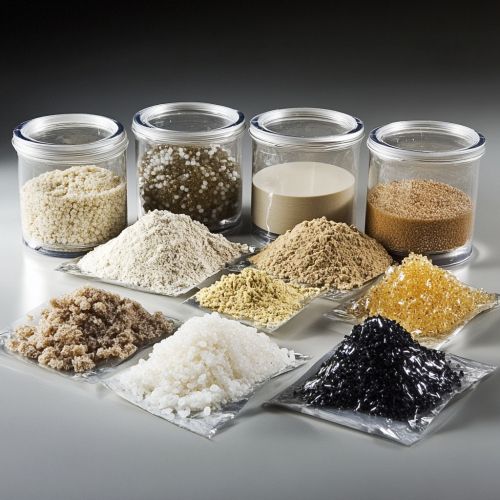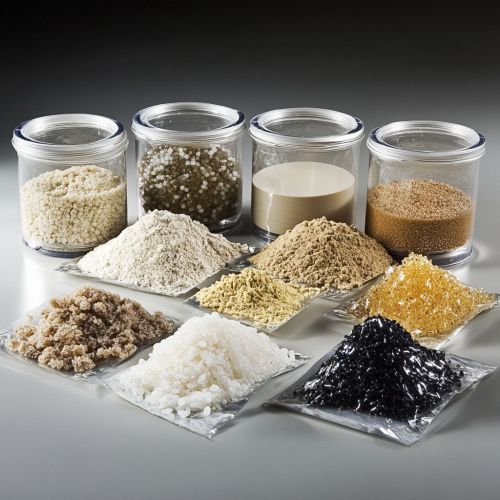Environmental Sustainability and the Role of Microbial Biopolymers: Difference between revisions
(Created page with "== Introduction == Environmental sustainability is a critical global issue, encompassing the responsible management of resources to ensure the health of our planet for future generations. One emerging area of interest within this field is the role of microbial biopolymers. These naturally occurring polymers, produced by microorganisms, offer a range of applications that can contribute to sustainable practices in various industries. == Microbial Biopolymers: An Overview...") |
No edit summary |
||
| Line 43: | Line 43: | ||
However, advancements in biotechnology and fermentation processes are expected to address these challenges, paving the way for broader adoption of microbial biopolymers. | However, advancements in biotechnology and fermentation processes are expected to address these challenges, paving the way for broader adoption of microbial biopolymers. | ||
[[Image:Detail-97437.jpg|thumb|center|Microbial biopolymers in various forms, including powder, granules, and films.|class=only_on_mobile]] | |||
[[Image:Detail-97438.jpg|thumb|center|Microbial biopolymers in various forms, including powder, granules, and films.|class=only_on_desktop]] | |||
== Conclusion == | == Conclusion == | ||
Latest revision as of 05:25, 1 August 2024
Introduction
Environmental sustainability is a critical global issue, encompassing the responsible management of resources to ensure the health of our planet for future generations. One emerging area of interest within this field is the role of microbial biopolymers. These naturally occurring polymers, produced by microorganisms, offer a range of applications that can contribute to sustainable practices in various industries.
Microbial Biopolymers: An Overview
Microbial biopolymers are polymers synthesized by microorganisms such as bacteria, fungi, and algae. These biopolymers include polysaccharides, polyesters, and polyamides, which can be utilized in numerous applications due to their biodegradability and biocompatibility.
Types of Microbial Biopolymers
Microbial biopolymers can be classified into several categories based on their chemical structure and properties:
- **Polysaccharides:** These include xanthan, alginate, and pullulan. Polysaccharides are known for their thickening, gelling, and stabilizing properties.
- **Polyhydroxyalkanoates (PHAs):** These are polyesters produced by bacterial fermentation. PHAs are biodegradable and can be used as alternatives to petrochemical-based plastics.
- **Polyamides:** These include biopolymers like polyglutamic acid (PGA), which have applications in medicine and agriculture.
Environmental Benefits of Microbial Biopolymers
Microbial biopolymers offer several environmental benefits, making them valuable for sustainable practices:
- **Biodegradability:** Unlike conventional plastics, microbial biopolymers are biodegradable, reducing the accumulation of plastic waste in the environment.
- **Renewable Resources:** These biopolymers are derived from renewable resources, such as agricultural waste, reducing dependence on fossil fuels.
- **Reduced Carbon Footprint:** The production of microbial biopolymers often results in lower greenhouse gas emissions compared to traditional plastic manufacturing.
Applications in Various Industries
Microbial biopolymers have diverse applications across multiple industries, contributing to environmental sustainability in unique ways.
Agriculture
In agriculture, microbial biopolymers are used as soil conditioners, biofertilizers, and biopesticides. For instance, chitosan is used to enhance plant growth and protect crops from pathogens.
Medicine
In the medical field, microbial biopolymers are utilized for drug delivery systems, wound dressings, and tissue engineering. Hyaluronic acid and PGA are notable examples of biopolymers with medical applications.
Packaging
Microbial biopolymers are increasingly used in the packaging industry as biodegradable alternatives to conventional plastics. PHAs, for example, are used to produce compostable packaging materials.
Water Treatment
Microbial biopolymers such as alginate are employed in water treatment processes to remove heavy metals and other contaminants from wastewater.
Challenges and Future Prospects
Despite their potential, the widespread adoption of microbial biopolymers faces several challenges:
- **Cost of Production:** The production of microbial biopolymers can be expensive, limiting their competitiveness with traditional plastics.
- **Scalability:** Scaling up the production processes to meet industrial demands remains a significant challenge.
- **Performance:** Some microbial biopolymers may not match the performance characteristics of conventional materials, necessitating further research and development.
However, advancements in biotechnology and fermentation processes are expected to address these challenges, paving the way for broader adoption of microbial biopolymers.


Conclusion
Microbial biopolymers represent a promising avenue for promoting environmental sustainability. Their biodegradability, renewable nature, and diverse applications make them valuable alternatives to conventional materials. Continued research and innovation in this field are essential to overcome existing challenges and fully realize the potential of microbial biopolymers in contributing to a sustainable future.
